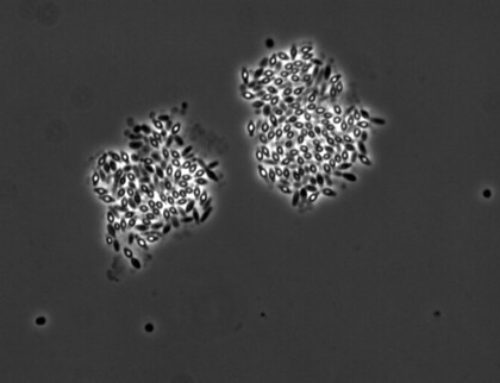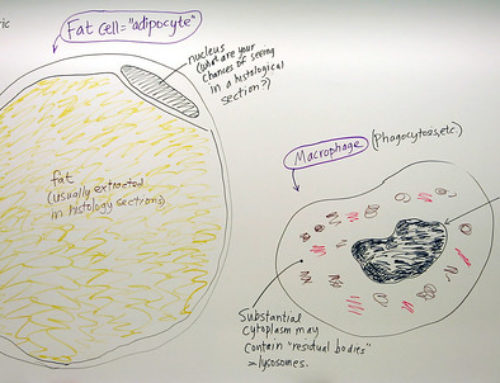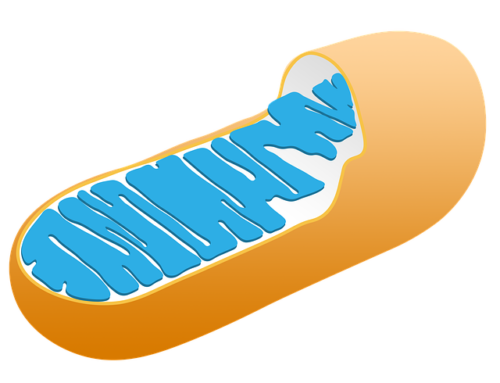| Structure | Chemical Composition | Function |
| Essential Components | ||
| Cell Wall
Peptidoglycan
Outer membrane of Gram- negative bacteria
Surface fibers of Gram- positive bacteria |
Sugar backbone with peptide side chains that are cross-linked
Lipid A + Polysaccharide
Teichoic acid |
Provides rigid support and shape, protects against osmotic pressure; site of action of penicillins & cephalosporins; is degraded by lysozyme.
Toxic component of endotoxin.
Major surface antigen used frequently in lab diagnosis.
Major surface antigen; LPS-like. |
| Cytoplasmic (Cell) Membrane | Lipoprotein bilayer without sterols | Site of oxidative and transport enzymes. |
| Ribosome | RNA and protein in 50S and 30S subunits (70S) | Protein synthesis; site of action of aminoglycosides, erythromycin, tetracyclines & chloramphenicol. |
| Nucleoid | DNA | Genetic material |
| Mesosome | Invagination of plasma membrane | Involved in cell division and secretion. |
| Periplasm | Space between plasma membrane & outer membrane | Contains many hydrolytic enzymes, including
β-lactamases. |
| Nonessential Components | ||
| Capsule | Polysaccharide* | Protects against phagocytosis |
| Pilus or Fimbriae | Glycoprotein | 2 types: (1) mediates attachment to cell surfaces; (2) sex pilus mediates attachment of 2 bacteria during conjugation & transfer of genetic material. |
| Flagellum | Protein | Motility |
| Spore | Keratin-like coat; dipicolinic acid | Provides resistance to dehydration, heat & chemicals; germination gives rise to single cell. |
| Plasmid | DNA | Contains a variety of genes for antibiotic resistance and toxins. |
| Granule | Glycogen, lipids, polyphosphates | Site of nutrients in cytoplasm. |
| Glycocalyx | Polysaccharide | Mediates adherence to surfaces. |
*Except for Bacillus anthracis, in which it is a polypeptide of D-glutamic acid.
Cell Wall
- Outermost structure common to all bacteria, except Mycoplasma species which do not have a cell wall.
- Multi-layered, located just outside of cytoplasmic membrane.
- In Gram-negative bacteria, the cell wall is composed of inner layer of peptidoglycan and an outer membrane.
- Polysaccharide and protein constituents of bacterial cell walls are often antigens used in lab identification.
- The cell walls of some Gram-negative bacteria contain porin proteins in the outer membrane which are involved in regulating the passage of small hydrophilic molecules into the cell, including essential nutrients and antimicrobial drugs.
- Cell walls of Gram-positive vs. Gram-negative bacteria
| Component | Gram-positive Cells | Gram-negative Cells |
| Peptidoglycan | Thicker; multilayer | Thinner; single layer |
| Teichoic acids | Yes (some species have) | No |
| Lipopolysaccharide (LPS, endotoxin) | No | Yes |
| Periplasmic space (in some species this contains
β-lactamases) |
No | Yes |
- Cell walls of Acid-fast bacteria
a) Unlike Gram-positive and Gram-negative bacteria, Mycobacteria species have cell walls with a high concentration of lipids called mycolic acids, and cannot be Gram stained.
- Peptidoglycan (also called murein, mucopeptide)
a) “peptides and sugars”
b) Carbohydrate backbone composed of alternating N-acetylmuramic acid and N-acetylglucosamine molecules. A tetrapeptide consisting of both D- and L-amino acids is attached to each muramic acid molecule. The composition of the tetrapeptide differs among bacteria.
-
- The amino acid, diaminopimelic acid is unique to bacterial cell walls.
-
- The amino acid, D-alanine, is involved in the cross-links between tetrapeptides and in the action of penicillin.
c) Only present in bacterial cells; not in human cells—makes it a good target for antibacterial drugs. Ex. Penicillins, cephalosporins, and vancomycin interfere with peptidoglycan synthesis by inhibiting the transpeptidase that cross- links the 2 adjacent tetrapeptides.
d) Lysozyme cleaves the peptidoglycan backbone by breaking glycosyl bonds. Lysozyme is present in human tears, saliva and mucous and is a natural defense to bacterial infection.
-
- Lysozyme treatment will cause bacteria to lose their cell wall, swell and rupture, unless they are in a solution with the same osmotic pressure as inside the bacterial cell. These spherical forms, called protoplasts (derived from Gram-positive bacteria) or spheroplasts (derived from Gram-negative bacteria), survive with only the cytoplasmic membrane.
- Lipopolysaccharide (LPS)
a) is found in the outer membrane of the cell wall of Gram-negative bacteria.
b) is an endotoxin—an integral part of the cell wall (as opposed to exotoxins which are released from bacteria). Endotoxin is directly responsible for many disease symptoms caused by these organisms, including fever (it is pyrogenic whether or not the bacterium is alive!), and shock (especially hypotension).
c) LPS composed of 3 units:
-
- Lipid A—a phospholipid responsible for the toxic effects.
- A core polysaccharide of 5 sugars linked to lipid A.
- An outer polysaccharide consisting of up to 25 repeating units of 3-5 sugars; the somatic or O antigen of several Gram-negative bacteria used for clinical identification.
10. Teichoic Acid
-
- Water-soluble polymers (fiber-like) of glycerol or ribitol phosphate covalently linked to peptidoglycan in the outer layer of Gram-positive cell wall and extending from it. Fibers penetrating the peptidoglycan layer and covalently linked to lipid in the cytoplasmic membrane are called lipoteichoic acid.
- Induces septic shock caused by certain Gram-positive bacteria by activating the same pathways as LPS.
- Mediates attachment of Staphylococcus aureus to mucosal cells.
Photo by Internet Archive Book Images





Leave a Reply